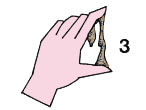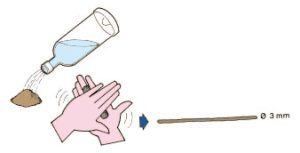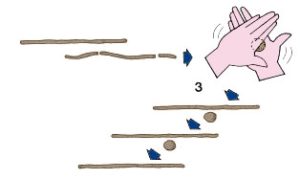Difference between Stickiness and Plasticity of Soil
Stickiness is the ability of soil materials to adhere to other objects, and it may be slightly sticky, sticky, very sticky or non-sticky.
Plasticity of a soil is its capacity to change its shape depending on stress and to retain the shape even when the stress is removed. There are also four degrees in plasticity namely, non-plastic, slightly plastic, plastic and very plastic.
Soil consistency (resistance of soils to deformation and rupture) is determined for wet, moist and dry soil samples. For wet soils, it is expressed as both stickiness and plasticity.
Field Test for Stickiness of Wet Soil
Press a small amount of wet soil between your thumb and forefinger to see if it will stick to your fingers. Then slowly open your fingers. Rating of stickiness in the field test is done as follows.

0 Non-sticky, if no soil or practically no soil sticks to your fingers;

1 Slightly sticky, if the soil begins to stick to your fingers but comes off one or the other cleanly and does not stretch when the fingers are opened;

**2 Sticky , if the soil sticks to both the thumb and forefinger and tends to stretch a little and pull apart rather than pulling free from your fingers;

**3 Very sticky , if the soil sticks firmly to both thumb and forefinger and stretches when the fingers are opened.

Field Test for Plasticity of Wet Soil
Roll a small amount of wet soil between the palms of your hands until it forms a long, round strip like a wire about 3 mm thick. Rate the plasticity as follows:

0 Non-plastic, if no wire can be formed;
![]()
1 Slightly plastic, if a wire can be formed but can easily be broken and returned to its former state;
![]()
**2 Plastic , if a wire can be formed but, when it is broken and returned to its former state, it cannot be formed again;
![]()
**3 Very plastic , if a wire can be formed which cannot be broken easily and, when it is broken, it can be rolled between your hands and be reformed several times.

(source: FAO)